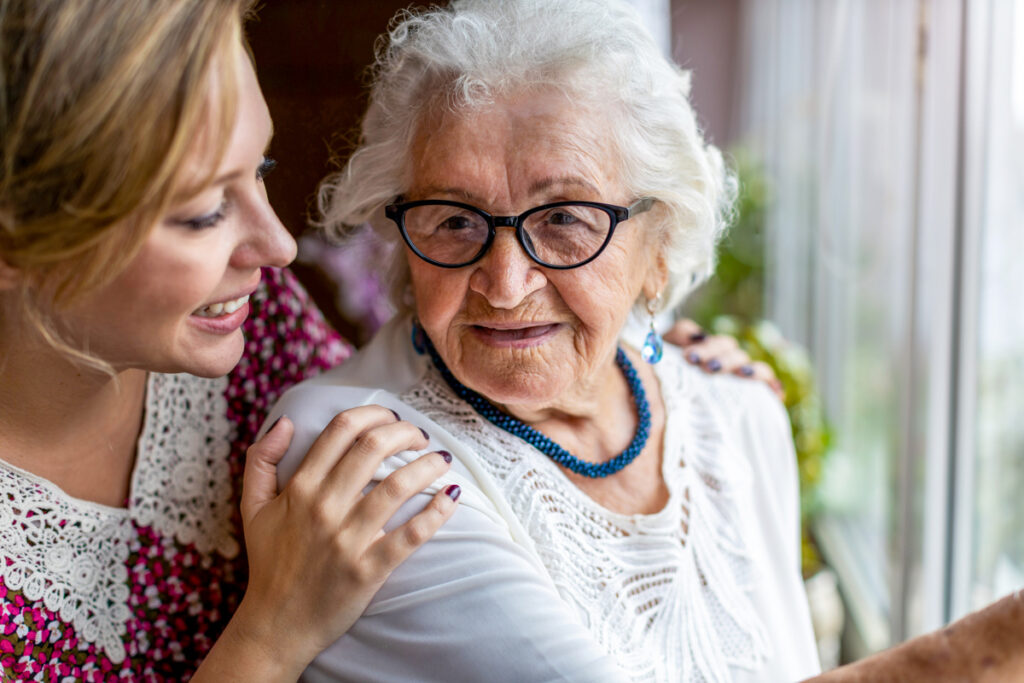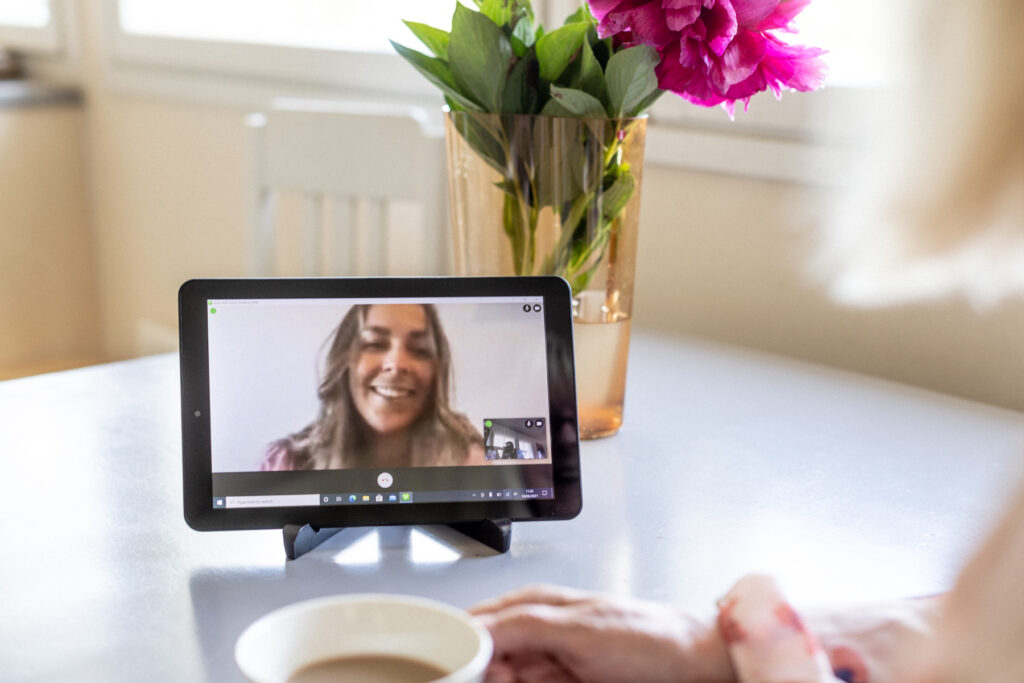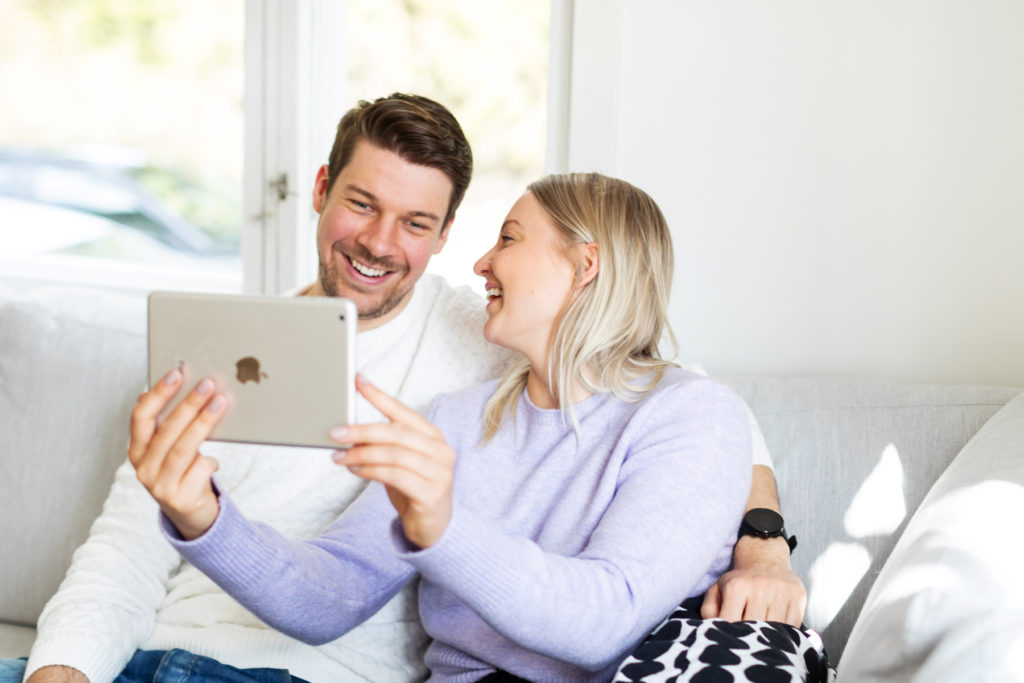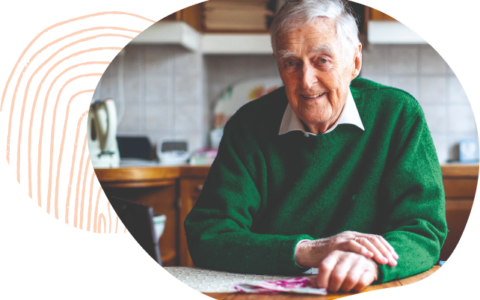Oiva Health enables preventive care, makes the daily life of professionals easier, brings security to the patients and increases happiness
The well-being information collected from care recipients by Digital Care module guides and supports the virtual care unit’s daily service operation. Well-being information tells about the care recipient’s health and the changes that occur in it. In this way, it is possible to react quickly to changes in the client’s condition and to prioritize care visits.
Benefits for care professionals
All the critical tools of home remote services are centralized in one user interface for remote care professionals:
- Processing alarms received from security phones and other sensors
- Remote home care visits by using Virtual Home Care
- Monitoring the well-being and activity of care recipients
- Enables the professional to react quickly to changes in the care recipient’s well-being
Added value for care providers
- Saves nursing staff time
- Responds to crucial care resource challenges
- Only one system for care personnel to learn
- Enables faster discharge of patients
- One digital platform eliminates the costs of overlapping systems

Virtual Home Care – genuine encounters and care via video connection at home
Most people prefer to live in their own home as long as possible. Virtual Home Care, in which the nurse is in contact with the care recipient via video connection, has become a part of the set of services available at home. For care recipients in good health, a care visit carried out via video connection serves as a rehabilitative and social event.
Care professional
Browser-based user interface for care professionals. Allows virtual care visits, group-based events, monitoring well-being data and receiving care alarms.
Family member
For relatives, iOS and Android mobile applications for communication with care recipients and and virtual care professionals.
Care recipient
An easy-to-use mobile application designed for the care recipient and installed on a tablet device. Enables communication, provides security and activates users.
Content provider
Restricted content access to the service for third sector operators, such as non-profit organizations. Browser based.
Most used Virtual Care service in the Nordic home care market with over 1,7M annual virtual care visits.
Virtual Home Care is being used for example in
- To ensure medication intake at the right time
- For monitoring the care recipients’s general well-being
- For providing social support
- For rehabilitation (one-on-one rehabilitation and group rehabilitation)
- For meal supervision (social meal time with the group)
- For communication between family members and care recipients
- Consultations between nurses, remote doctor appointments, home hospitals visits and nurse-doctor consultations


Well-being data guides the care services
Well-being data collected by from care recipients guides and supports remote home care services. The data tells about the care recipient’s well-being and the changes that occur in it. In this way, it is possible to react quickly to changes in the care recipient’s condition and to prioritize care visits.
The professionals of the remote care unit can prioritize the remote care services with the help of the well-being data. The changes in the client’s well-being or activity reported by the system can be confirmed during a remote visit by checking, for example, the client’s medication intake, general state of well-being, and the effectiveness of medical treatment and medication with an objective measurement of well-being.
At the same time, for example in rehabilitation services, well-being data tells objectively how the client’s condition has started to progress. Timely reaction to changes in well-being is easier when well-being information guides the remote care services.
Often asked questions
How Digital Care benefits the care professionals?
- Processing alarms received from security phones and other sensors
- Providing remote home care visits to home care recipients
- Monitoring the well-being and activity of care recipients
- Quick response to possible changes in the care recipient’s well-being
- For rehabilitation (one-on-one rehabilitation and group rehabilitation)
- For meal supervision (social meal time with the group)
- For providing social support to care recipients
- Consultations between nurses, remote doctor appointments, home hospitals visits and nurse-doctor consultations
How Digital Care supports the care recipients?
- Increases the feeling of security and reduces loneliness
- Ensuring medication intake at the right time of the day
- When measuring blood sugar and injecting insulin
- Reminding to prepare meals and eat
- In rehabilitation
- Bring joy and content to your days
- Increases sociability and happiness
- Communication with loved ones and professionals becomes easier. The family has its own mobile application, which allows you to easily get a video connection to the customer device.
What are the benefits for care providers?
- Digital Care brings clear cost savings to organizations
- Remote visits save time and solve the challenge of limited care resources
- One digital platform eliminates overlapping costs
- Enables faster discharge of patients from specialized medical care
- Decreasing carbon footprint since there is no need to travel physically to visit care recipients
Why is Digital Care easy to implement?
- A care professional only needs to learn one user interface
- Not many separate technical solutions to maintain
- Technical knowledge is not needed from the care recipients – the remote care visit opens even without pressing a button
News
-

Tønsberg Municipality Becomes Norway’s First to Launch a Digital Home Care Service
Tønsberg Municipality proudly announced that it has become the first municipality in Norway to launch a digital home care service powered by Oiva Health.
-

Oiva Health Enters the Norwegian Welfare Market
To lead this initiative to enter into the Norwegian welfare market, Oiva Health has appointed Cato Andresen as the Regional Sales Manager for Norway.
-

Oiva Health Group Appoints Juha Järvi as New Chief Commercial Officer
Oiva Health Group is pleased to announce the appointment of Juha Järvi as the new Chief Commercial Officer (CCO), effective immediately. Juha will also join Oiva Health’s Management Board. Juha…

